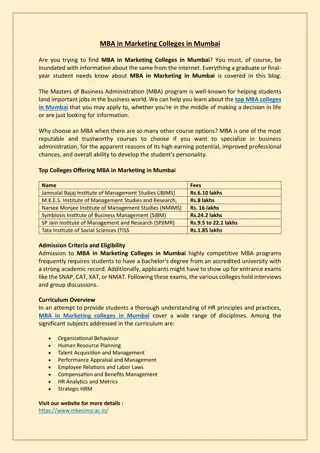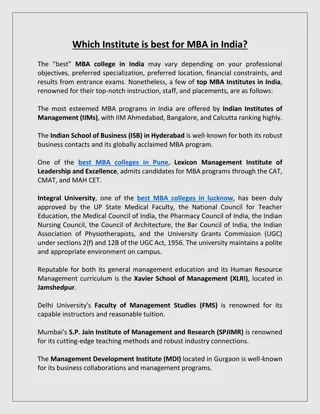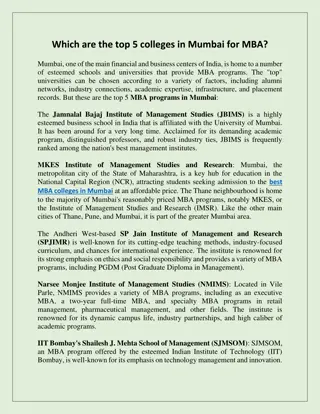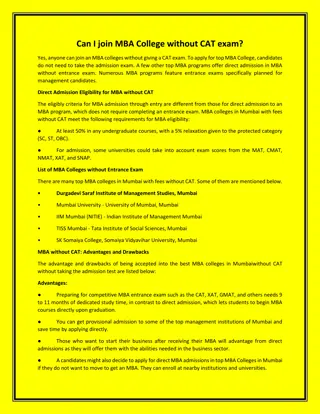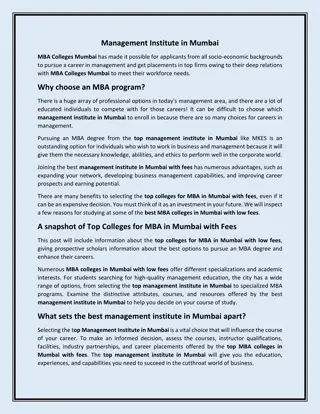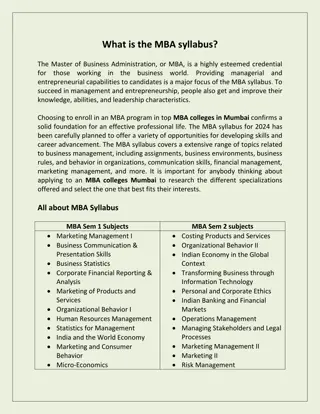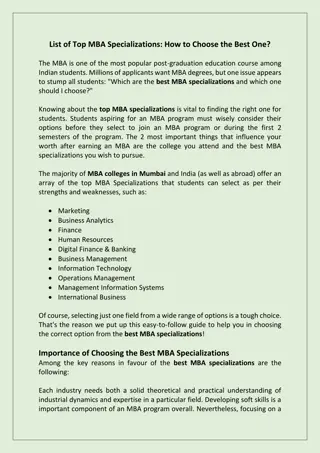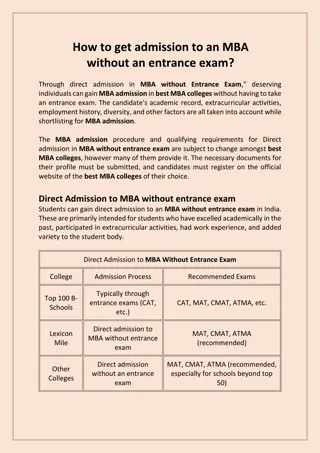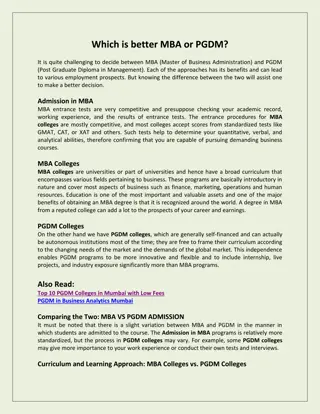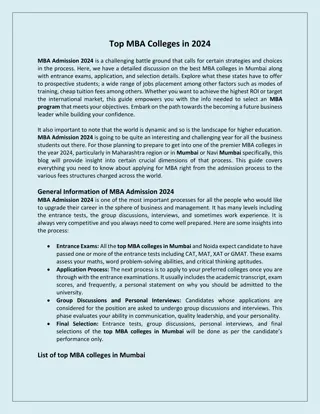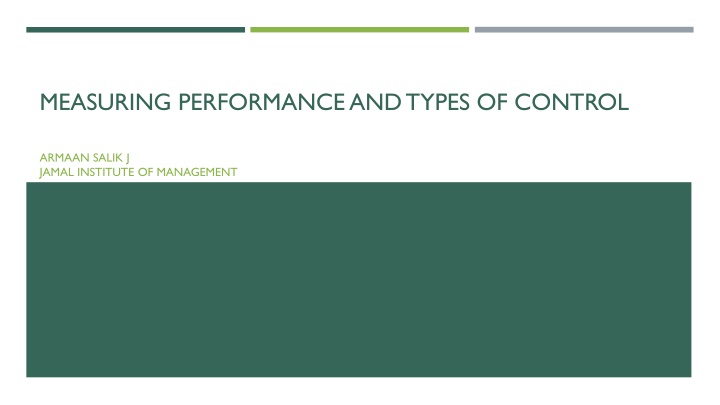
Effective Measurement and Control in Strategic Management
Enhance organizational performance through strategic measurement and control mechanisms. Learn about financial and non-financial metrics, types of control, and their importance in achieving strategic objectives efficiently.
Download Presentation

Please find below an Image/Link to download the presentation.
The content on the website is provided AS IS for your information and personal use only. It may not be sold, licensed, or shared on other websites without obtaining consent from the author. If you encounter any issues during the download, it is possible that the publisher has removed the file from their server.
You are allowed to download the files provided on this website for personal or commercial use, subject to the condition that they are used lawfully. All files are the property of their respective owners.
The content on the website is provided AS IS for your information and personal use only. It may not be sold, licensed, or shared on other websites without obtaining consent from the author.
E N D
Presentation Transcript
MEASURING PERFORMANCE AND TYPES OF CONTROL ARMAAN SALIK J JAMAL INSTITUTE OF MANAGEMENT
INTRODUCTION Strategic management ensures that organizations achieve their goals efficiently. Measuring performance and implementing control mechanisms are critical to strategy execution.
MEASURING PERFORMANCE Performance measurement is the process of evaluating the effectiveness of strategic actions. Helps in decision-making,resource allocation,and continuous improvement. Provides insights into operational efficiency,market competitiveness,and long-term sustainability. Organizations use both quantitative and qualitative metrics for a comprehensive evaluation. Key areas of measurement: Financial Performance (profitability,cost efficiency,revenue growth). Operational Performance (efficiency of processes,productivity levels). Customer Performance (customer satisfaction,loyalty,and retention). Employee Performance (engagement,skill development,contribution to objectives).
FINANCIAL PERFORMANCE METRICS Essential for understanding an organization's economic health. Key financial metrics include: Revenue Growth: Measures increase in total sales over time. Profit Margins: Gross, operating, and net margins indicate financial efficiency. Return on Investment (ROI): Evaluates profitability relative to investment. Earnings Before Interest and Taxes (EBIT): Indicates core profitability before deductions. Economic Value Added (EVA):Assesses value created beyond capital costs. Helps stakeholders make informed financial and strategic decisions.
NON-FINANCIAL PERFORMANCE METRICS Equally important as financial metrics in strategic evaluation. Measures qualitative aspects that impact long-term sustainability. Key non-financial metrics include: Customer Satisfaction Index:Assesses customer perceptions and experiences. Employee Productivity and Engagement: Evaluates workforce efficiency and motivation. Market Share and Brand Recognition: Indicates competitive position in the industry. Innovation and R&D Outcomes: Measures effectiveness of new product development. Sustainability and Corporate Social Responsibility (CSR): Examines ethical and environmental contributions. Helps organizations align their strategy with stakeholder expectations.
TYPES OF CONTROL IN STRATEGIC MANAGEMENT Control systems ensure that strategic objectives are met efficiently. Act as a mechanism to monitor and correct deviations from strategic goals. Three main types of control: Feedforward Control (Preventive) Focuses on inputs and prevents issues before they arise. Concurrent Control (Real-time) Monitors activities as they occur to ensure alignment. Feedback Control (Corrective) Evaluates outputs and provides insights for improvement. A well-designed control system balances flexibility and consistency in strategic execution.
FEEDFORWARD CONTROL Also known as preventive control because it focuses on proactive measures. Involves analyzing potential risks and setting preemptive strategies. Examples of feedforward control: Conducting market research before launching a new product. Providing training programs before implementing a new technology. Establishing standardized procedures to prevent production errors. Helps organizations minimize risks and ensure smooth strategy implementation.
CONCURRENT CONTROL Also known as real-time control, ensuring continuous monitoring during execution. Helps organizations make immediate corrections before issues escalate. Examples of concurrent control: Quality control inspections in manufacturing processes. Real-time performance tracking in customer service centers. Continuous monitoring of financial transactions to detect fraud. Improves operational efficiency and prevents costly mistakes.
FEEDBACK CONTROL Also known as corrective control, focuses on evaluating past performance. Used to identify deviations and make necessary improvements. Examples of feedback control: Conducting customer satisfaction surveys to refine service quality. Reviewing financial statements to adjust budget allocations. Analyzing employee performance reports to enhance training programs. Ensures organizations learn from past experiences and improve future strategies.
BALANCED SCORECARD APPROACH A widely used framework for comprehensive performance evaluation. Introduced by Kaplan and Norton, focusing on four key perspectives: Financial Perspective: Profitability, revenue growth, and shareholder value. Customer Perspective: Customer satisfaction, loyalty, and brand reputation. Internal Processes Perspective: Operational efficiency, quality improvement, and innovation. Learning and Growth Perspective: Employee development, technological advancements, and organizational culture. Helps organizations align performance measurement with strategic objectives.
IMPORTANCE OF STRATEGIC CONTROL Essential for ensuring effective strategy implementation. Key benefits of strategic control: Aligns Actions with Goals: Ensures resources are used effectively toward objectives. Identifies Deviations Early: Helps in detecting and correcting performance gaps. Improves Decision-Making: Provides data-driven insights for leadership. Enhances Accountability: Encourages responsibility across departments. Drives Competitive Advantage: Helps organizations stay agile and adaptive. A well-structured control system fosters sustainable business growth.
CONCLUSION Measuring performance and implementing control mechanisms are vital for strategic success. Organizations must use a combination of financial and non-financial metrics. A well-structured control system improves decision-making and competitive advantage.


